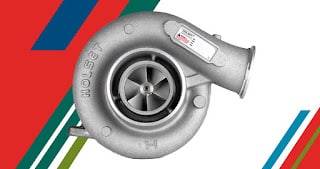5 Key Features to Look for in a Driving Simulator

Most people think of a driving simulator as something you might find at an arcade or amusement park. But for engineers, simulator technology is an invaluable tool to test and optimize autonomous vehicles during development without risking lives.
Simulator fidelity relates to the physical characteristics of the simulator’s equipment and the extent to which they accurately replicate on-road driving. In contrast, behavioral fidelity refers to how well a simulator translates driver responses into actionable data.
Realistic Environment
Some simulators aim for the most realistic driving experience possible. They are usually tough, unforgiving, and require much skill to master.
They also provide a more controlled and safer environment than actual roadway driving. This allows researchers to conduct many experiments and driver evaluations that would be impractical, costly, and unsafe to execute in real-world driving conditions.
A driving simulator can evaluate how drivers respond to unexpected situations, such as tire failures, harsh weather, and other emergencies. They can even test how drivers react to varying blood alcohol levels.
Some companies are using simulators to help train fleet drivers for new situations they’re likely to face. The goal is to reduce the rate of accidents caused by new drivers while minimizing the time it takes for them to become proficient in their driving skills.
Accurate Controls
The controls in a simulator must be accurate, especially for a driving simulation. This is because they must replicate the feel of driving on real roads and highways. This is necessary for proper practice and learning how to handle difficult situations on the road.
A simulator must also be able to simulate a variety of roadway and environmental variables to test and evaluate an HMI. These variables include simulated vehicle dynamics (e.g., lateral perturbations such as low-frequency simulated crosswind gustiness), traffic, and other drivers.
Simulators can reduce the time and cost of evaluating an HMI. Additionally, they can help create a more compelling, immersive connection with the driver. This is why many companies use these devices for their training programs.
High-Resolution Screens
To mimic the physical inputs to a vehicle, a simulator must have high-resolution screens. This is important as a simulator must accurately represent speed, distance, and other factors. A high-resolution monitor provides a more immersive experience and reduces Simulator Adaptation Syndrome.
A simulator allows engineers to research driver performance without expensive models and prototypes.
High-Fidelity Audio
High-fidelity is a term that is used by audiophiles to describe sound systems that deliver accurate, pleasant, and detailed music. A driving simulator must have high-fidelity audio to give the driver a realistic experience while behind the wheel.
Driving simulations allow researchers to create and evaluate more situations than would be practical or possible in other experimental media. They also enable recurrent training for critical events such as tire blowouts and roadside emergencies. These situations have been shown to have relatively high validity in that they are similar to and correlate with actual on-road driver behavior.
Customization
There are some different ways that you can customize your driving simulator. For example, you can choose from various car models and tracks. You can also customize the environment and weather conditions. This can help you get the most realistic experience possible.
Some studies have found that driving simulators provide good ecological validity, meaning they accurately replicate the driver’s behavior on the road. However, others have found that simulator results may not fully replicate the driving behavior of people who do not use their vehicles regularly.
Researchers also use simulators to study driver training issues that would be dangerous or unethical to test on the road, such as driving while distracted. They can also facilitate recurrent training in important skills that reduce operational costs, such as correct emergency response.










